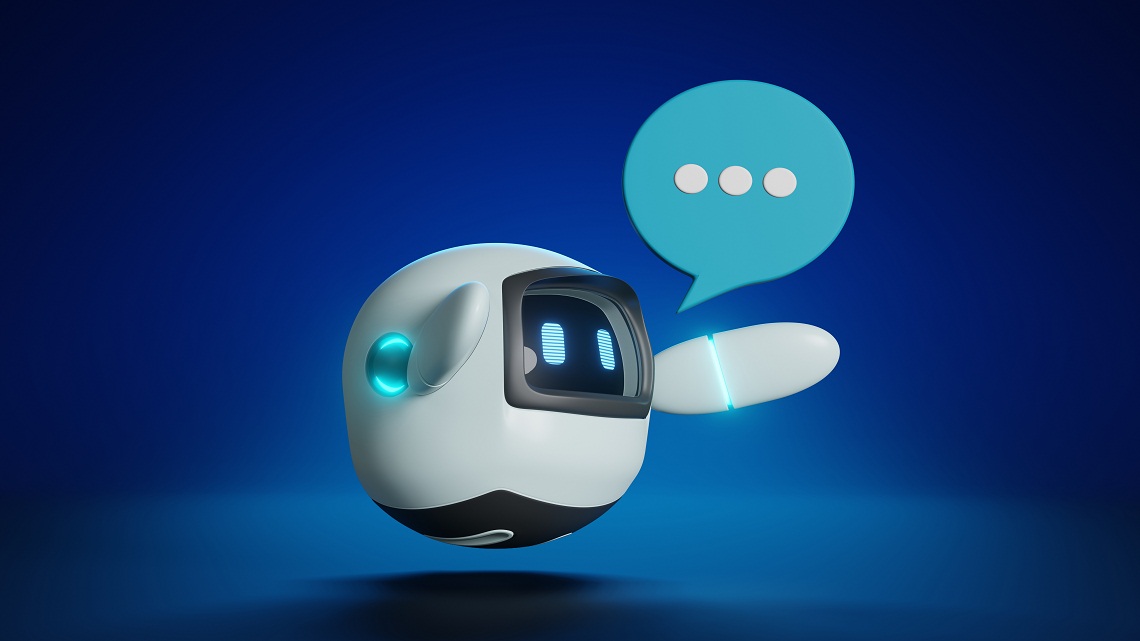
A chatbot is a virtual assistant created from artificial intelligence and designed to replicate human-like conversations through natural language processing (NLP) and machine learning models. Chatbots are integrated across numerous areas of business, from customer support to automating e-commerce, enabling digital more convenient and personalized online interactions. This blog unlocks how chatbots and conversational AI are redefining the business landscape with personalized communication, process automation and intelligent solutions.
What is a Chatbot
Chatbots are computer programs, predominantly invented to simulate human interactions in the form of text or voice responses digitally. It is being used to facilitate scripted answers for commonly asked queries as well as deal with complex problems by channeling AI data analysis. AI driven conversational bots can develop personalized outputs based on past interaction and understanding customer behaviors, making it an indispensable tool for domains like e-commerce and customer service.
Chatbots are mainly classified into Rule Based, AI powered and Hybrid Chatbot. Rule based bots are functioning in reference to a fixed set of predefined rules for reflecting predictability, consistency and developing reliable responses. AI powered models use NLP and ML technologies to create more advanced human simulations. Hybrid is the combination of AI powered conversation ability with rule based logic, providing consolidated advantages of both models.
How Chatbots work
- Rule-Based Chatbots
These strictly adhere to logic flows: If a keyword is an exact match, the rule triggers a predefined answer. Certain for structured inquiries such as “What are your hours?” and “Track my order.” The path is deterministic: Every entry must follow a predefined route.
- AI-Powered Chatbots
AI bots are programmed to use NLP systems for structure and flow of language pattern and ML to predict intent. They operate with breaks in the query between key entities (Who, what, when) and intents (ask, confirm, set schedule). The systems hence are often integrated with LLMs (large language models), these being GPT based engines programmed for contextual understanding for continued language flow.
- Hybrid Systems
Most chatbot systems today which can be classified as enterprise grade systems leverages the hybrid approach to cultivate reliability of rule vs. AI intelligence. They are set to revert to rule for actions which are structured such as verification but use AI rationale for open-ended questions.
The key technologies involved are
- Natural Language Understanding (NLU)
- Dialogue Management
- Integration APIs
- Machine Learning Models
Workflow operation:
The workflow operation follows as outlined below,
- User input (text & voice)
- Intent recognition – NLP decodes meaning
- Response generation – System crafts a reply
- Action execution
- Learning loop
The Different Types of Chatbots
- Customer Service Chatbots
Small businesses, banks, airlines, telecoms, etc. use these for instant issue resolution that reduces dependence on call centers. These chatbots can resolve as much as 80% of the routine issues, leaving agents relieved for focusing on other complexities.
- E-commerce Chatbots
Built into websites, chatbots can assist customers with product recommendations, returns, refunds, etc. Data-driven personalization enables conversion rates to be elevated by 20 to 25% per internal retail analytics.
- Enterprise Chatbots
These represent internal solutions such as HR department support, IT help desk responses, employee orientation, etc. They enhance productivity and aid process standardization across large workforces.
- Marketing Chatbots
A conversational marketing solution, these systems qualify prospects and capture leads understanding the customer interest. The passive visitor is converted to an active participant, a major marketing edge in modern competitive digital marketing.
- Healthcare and Education Chatbots
These bots allow appointment scheduling, symptom checking and post care instructions in healthcare situations. Privacy is not neglected as all data is submitted under data encryption protocols. In education, interactive learning, tutor support, individualized education progress tracking ensures interaction is learning centric.
- AI Companions and Generative Agents
The most advanced new age category of chatbots are generative AI models. These bots will engage in conversations that last and leveraging memory, emotional response, acuity and behaviors. Application as creative assistants to wellness support, these bots are emerging as the next leap toward human-computer sympathy.
Potential Business Benefits of Using Chatbots in Business
- 24/7 Availability
Chatbots provide uninterrupted assistance, handling massive volumes of queries simultaneously. The use of this feature improves usability and worldwide accessibility.
- Cost Efficiency
With respect to customer service costs, implementing a chatbot may lower marketing costs by up to 30%, according to Gartner. They grow rapidly, and their vigor does not result in an increase in the number of employees required. As a result, they are considered as one of the most affordable ways to automate.
- Scalability
Chatbots in business can communicate with up to thousands of conversations at a time, a capability which can’t be claimed for human agents. This capacity is vital in times of large traffic and very rapid company development.
- Personalization
Chatbots remember interactions and preferences through data analysis. As a result, there are very personalized conversations, with human feelings, thus improving loyalty.
- Data Insights
Every conversation results in structured information about consumer behavior, requirements and sentiment, leading to market ready developments in products, optimizing marketing and efficient management.
- Operational Efficiency
Chatbots promote many repetitive processes and reduce both service cycles and the response time, thus achieving enhanced satisfaction in customers and efficient performance measures.
Conclusion
Chatbots are at the center of today’s digital communications and represent a strategic alignment of artificial intelligence and human-centered design. With the application of predictive analytics and adaptive learning, designing chatbots that will perpetually enrich engagement while improving operational efficiency. The integration of conversational AI enables organizations to provide engagement experiences that are scalable, timely, and informed by the context. Embracing investment in chatbot technology today will undoubtedly establish organizations to lead into the future defined by intelligent automation and superior customer experience.
To read more, visit EMEA Entrepreneur.
